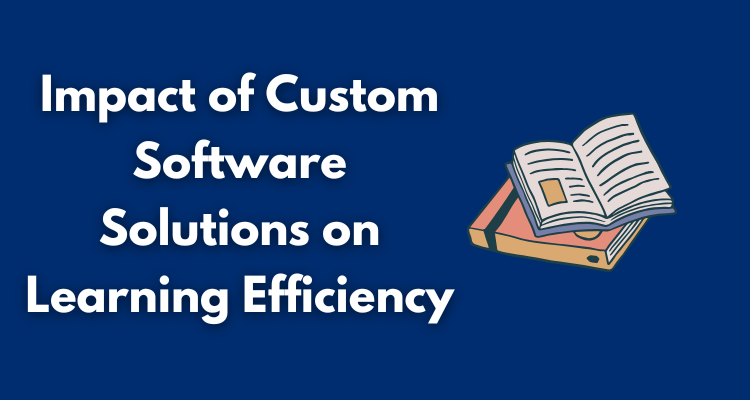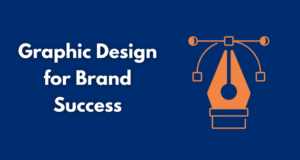As technology continues to advance, traditional learning methods are being supplemented by custom software solutions. These tools are designed to meet specific needs, allowing students and educators to improve their learning experience.
Custom software helps make learning more personalized, interactive, and efficient. Let’s explore how these tools are changing the way students learn and how institutions operate.
Table of Contents
ToggleWhat Are Custom Software Solutions?

Custom software solutions are applications designed specifically for an organization or individual. They are tailored to address unique challenges. In education, these solutions include learning management systems (LMS), adaptive learning platforms, and tools for handling administrative tasks like grading and attendance.
Custom software allows students to learn at their own pace, offering tools that adapt to their unique strengths and weaknesses. This is a huge advantage because every student learns differently. Adaptive learning platforms can adjust the difficulty of lessons or offer additional resources based on a student’s performance.
If a student struggles with a particular topic, the software might recommend extra practice problems or simplified explanations to help them better understand the material. On the other hand, if a student excels in a subject, the software might provide more challenging tasks or allow them to skip over sections they have already mastered, keeping them engaged and motivated.
This flexibility allows students to avoid getting frustrated with material that’s too difficult or too easy, making learning more efficient and enjoyable. When students learn at a pace that suits them, they are more likely to stay engaged and motivated, which leads to better learning outcomes. This constant interaction between the student and the software helps to build a more efficient learning cycle.
How Custom Software Enhances Learning Efficiency
Custom software solutions improve learning efficiency by offering personalized learning, real-time feedback, and collaboration tools. Achieving this level of customization often involves leveraging professional support, like Raccoongang Open edX services.
These features make learning more interactive, engaging, and responsive to individual needs. Let’s take a closer look at how custom software enhances learning efficiency.
1. Personalized Learning Paths
One of the main benefits of custom software is its ability to offer personalized learning. Not all students learn in the same way or at the same speed. Some need more time with certain topics, while others move faster. Custom software helps by adjusting content to fit each student’s needs. For example, adaptive learning platforms track a student’s progress and adjust the difficulty of tasks based on their performance.
For those who find themselves searching for services to write my essay, this often signals a need for more individualized and structured academic support. By offering targeted homework assistance tailored to each learner’s unique challenges, these services provide an extra layer of personalization.
As a result, students can tackle assignments more confidently and master subjects at their own pace, reducing the risk of boredom or overwhelm and promoting better engagement and faster progress.
Moreover, personalized learning paths help students take ownership of their education. When they see that the material is designed for them, they are more likely to stay motivated and continue learning efficiently.
2. Real-Time Feedback and Assessment
In traditional classrooms, students often have to wait days or weeks to get feedback on their work. This delay can prevent them from fixing mistakes quickly. Custom software solves this problem by providing real-time feedback. As soon as a student completes an assignment or quiz, they can see their results and learn where they went wrong.
This instant feedback allows students to correct mistakes right away, which keeps them on track. It also helps them reinforce concepts they’ve already mastered. Real-time assessments help students stay focused and improve their skills more quickly, making the learning process more efficient.
Additionally, teachers can use this feedback to monitor student progress more effectively. They can identify students who need extra help and adjust lessons accordingly, ensuring no one falls behind.
3. Collaboration and Engagement
Custom software also encourages collaboration among students and between students and teachers. Tools like online discussion forums, group projects, and shared workspaces make learning a more social and interactive experience. These tools encourage students to engage with their peers, exchange ideas, and solve problems together.
Moreover, custom software can include gamification features. Leaderboards, badges, and point systems can turn learning into a fun and rewarding activity. These features motivate students to participate more actively in lessons and complete assignments on time. Gamification helps keep students engaged and can lead to more effective learning.
Benefits for Educational Institutions

Custom software doesn’t just benefit students—it also brings great value to educational institutions. Schools and universities can use custom solutions to improve efficiency, reduce administrative burdens, and enhance the learning experience for both teachers and students.
4. Streamlined Administrative Tasks
Managing an educational institution involves many repetitive tasks, such as grading, tracking attendance, and scheduling. Custom software can automate many of these tasks, saving teachers and administrators a lot of time. For example, a custom LMS can automatically grade assignments, update progress reports, and notify students of upcoming deadlines. This reduces the amount of manual work and allows educators to focus on teaching.
Automating administrative tasks also reduces the chance of errors and makes processes more efficient. Institutions can also use custom software to send out important updates and reminders to students, improving communication between teachers, staff, and students.
5. Data-Driven Insights for Informed Decision-Making
Custom software solutions gather valuable data on student performance and engagement. Educational institutions can use this data to make informed decisions about curriculum design, teaching methods, and resource allocation. By analyzing patterns in student behavior, schools can identify areas where students are struggling and provide targeted support.
For example, if the data shows that many students are having difficulty with a specific topic, educators can adjust the curriculum or offer additional resources. This helps institutions improve the quality of education and ensures that every student has the opportunity to succeed.
Scalability and Flexibility
Custom software is also scalable and flexible, which makes it ideal for institutions that are growing or changing. As a school or university expands, custom software can easily adapt to meet new needs, such as adding more students or incorporating new technologies. This means the software continues to support the institution as it evolves, making it a long-term solution.
Companies that specialise in creating tailored tools need to meet the unique needs of educational institutions. From building learning management systems (LMS) to developing adaptive learning platforms, they work with schools, universities, and other educational organizations to improve the quality of education and enhance the learning experience.
Moreover, custom software can integrate with other tools and platforms, providing a more cohesive learning environment. For example, a custom LMS can connect with other software systems, allowing students to access all their learning materials in one place. By using custom-built software solutions, educational organizations can improve efficiency, provide personalized learning experiences, and stay ahead in the competitive landscape of modern education.
Conclusion: Tran sforming Education Through Custom Software Solutions
Custom software solutions are transforming education by enhancing learning efficiency. These tools offer personalized learning paths, provide real-time feedback, and encourage collaboration.
As a result, it makes learning more effective and engaging. For educational institutions, custom software simplifies administrative tasks, collects valuable data, allowing for better decision-making.
As education continues to evolve, custom software will play an even more significant role in improving the quality of learning. Whether you’re a student trying to optimize your learning experience or an institution looking to enhance educational outcomes, custom software provides the tools you need to succeed.









